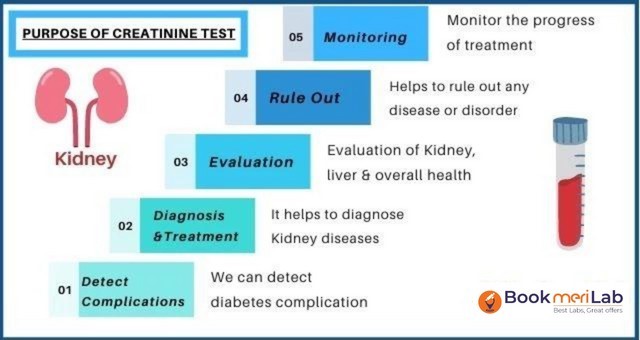A client who had knee replacement surgery receives a prescription for enoxaparin 30 mg subcutaneously every 12 hours for 10 days. The medication is available in 30 mg per 0.3 mL prefilled syringes. How many mL should the practical nurse (PN) administer each day? (Enter numerical value only.).
The Correct Answer is ["0.6"]
Step 1: The medication is prescribed as 30 mg every 12 hours, which means it is given twice a day. So, the total daily dosage in mg is 30 mg × 2 = 60 mg.
Step 2: The medication is available in 30 mg per 0.3 mL. So, to find out how many mL correspond to 60 mg, we set up a proportion: (30 mg / 0.3 mL) = (60 mg / x mL). Solving for x gives x = (0.3 mL / 30 mg) × 60 mg = 0.6 mL.
Therefore, the practical nurse should administer 0.6 mL of the medication each day.
Nursing Test Bank
Naxlex Comprehensive Predictor Exams
Related Questions
Correct Answer is B
Explanation
The correct answer is choice B, Serum creatinine. Choice A rationale:
The white blood cell count (WBC) is an important parameter for assessing the body's immune response to infections. While it can provide valuable information about the presence of an infection, it is not directly related to nephrotoxicity. Therefore, it is not the most important laboratory value to review before administering an antibiotic that can cause nephrotoxicity.
Choice B rationale:

Serum creatinine is a crucial laboratory value to assess kidney function. It is a waste product that is filtered by the kidneys, and its level in the blood is a reliable indicator of kidney function. If the serum creatinine level is elevated, it suggests impaired kidney function, which can be a warning sign of nephrotoxicity. Reviewing the serum creatinine level before administering nephrotoxic antibiotics is essential to ensure that the client's kidneys are functioning adequately and to avoid potential harm.
Choice C rationale:
Hemoglobin and hematocrit are indicators of the client's red blood cell count and blood's oxygen-carrying capacity. While these values can provide information about the client's overall health status, they are not directly related to nephrotoxicity. Therefore, they are not the most important laboratory values to review in this particular scenario.
Choice D rationale:
Serum calcium levels are essential for assessing bone health, nerve function, and muscle contractions. However, they are not directly related to nephrotoxicity, and reviewing serum calcium levels alone would not provide sufficient information about kidney function. Hence, it is not the most critical value to review before administering nephrotoxic antibiotics
Correct Answer is A
Explanation
The correct answer is choicea. Teach the client to use a straw when taking the medication to reduce further tooth staining.
Choice A rationale:
Using a straw when taking liquid iron preparations helps minimize contact with the teeth, thereby reducing the risk of staining.
Choice B rationale:
While tooth discoloration can indicate that the iron is being absorbed, it is not a desired effect and should be managed to prevent cosmetic concerns.
Choice C rationale:
Assessing for mouth or gum pain and difficulty swallowing is important but not directly related to the issue of tooth staining.
Choice D rationale:
Advising the client to withhold doses without consulting a healthcare provider could lead to non-compliance and inadequate treatment of iron deficiency.
Whether you are a student looking to ace your exams or a practicing nurse seeking to enhance your expertise , our nursing education contents will empower you with the confidence and competence to make a difference in the lives of patients and become a respected leader in the healthcare field.
Visit Naxlex, invest in your future and unlock endless possibilities with our unparalleled nursing education contents today
Report Wrong Answer on the Current Question
Do you disagree with the answer? If yes, what is your expected answer? Explain.
Kindly be descriptive with the issue you are facing.
